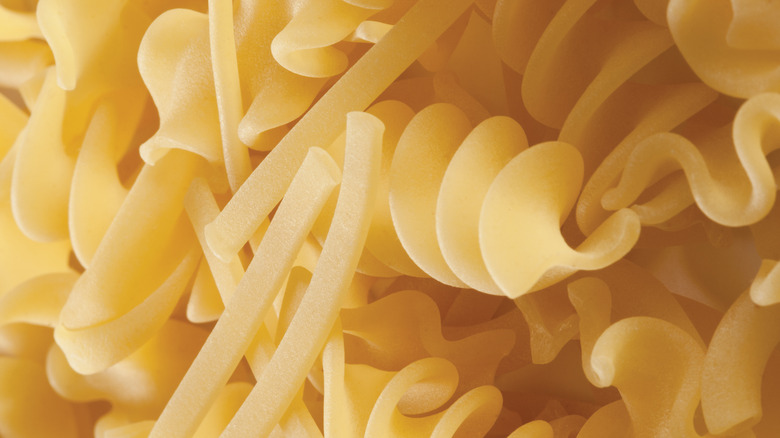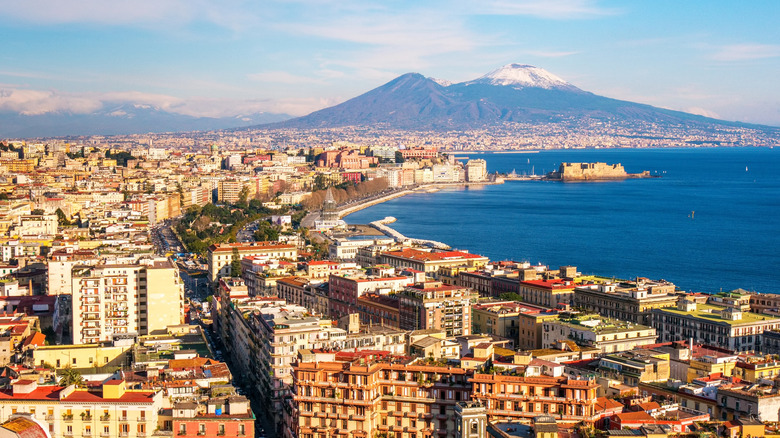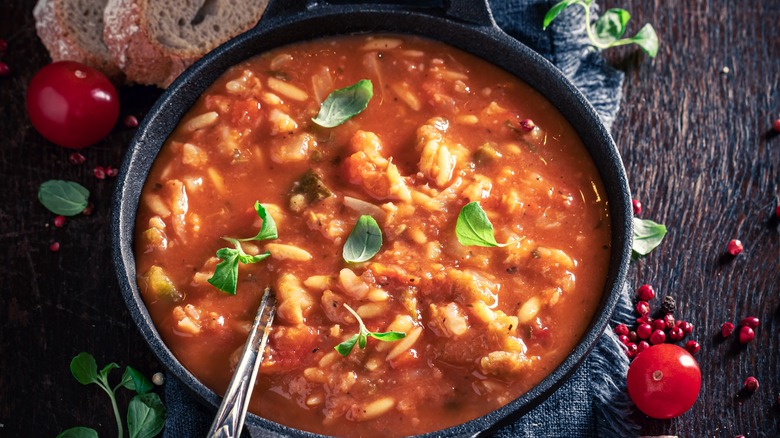Napoli's Pasta Mista Corta Leaves No Pasta Pieces Behind
The city of Naples in southern Italy is perhaps the most resilient in the entire country. No other Italian city suffered so much damage during World War II than Naples. Its survival hedged on the spirit of the people, who had more than their fair share of hardships. That same survival was aided by the longstanding tradition of cucina povera, the food of the poor. Cucina povera's combination of thrift, economy, and creativity has served not only the population of Naples but the entire world. Naples is, after all, the birthplace of pizza.
The chief element of cucina povera is the elimination of food waste. While it was common for rural Italians to grow a decent amount of their own food, the dock workers, masons, and carpenters of Naples had to rely on markets and vendors in order to receive food. It was, therefore, vital to be economical. Cucina povera translated to everything from meat and vegetables to pasta and bread.
Naples is hardly the only of Italy's cities to bear witness to the ravages of history. However, Naples stands apart from a culinary standpoint because of just how much they were able to make out of so little. If you think of the numerous iconic dishes to come out of Naples, like pizza or the hearty vegetable soup minestrone, you can understand the difference. Napoli gets creative with pasta as well, especially seeing as one of their favorites is made up of broken pasta pieces.
Out of necessity, creativity
The cucina povera practice of pasta mista corta occurred almost exclusively amongst Naples' working class and peasantry. Long before it became a boxed and bagged commodity, pasta in Naples was sold by weight out of large wooden barrels. When the pasta was all but sold, vendors would scrounge the bottom of the barrels for various pieces, broken or whole. They would combine the remaining pasta and sell it as a variety mix. Originally called munnezzaglia, Neapolitan for "all garbage," it was later rebranded as pasta mista, or "mixed pasta."
Pasta mista is not so much made as it is bought. Of course, anyone can buy or make an assortment of pasta and mix it all together, but that is not the point. Pasta mista is again that combination of necessity and waste reduction. Naturally, this practice extended into the home. If ever there was leftover pasta, regardless of shape or size, it would be tossed together into a dish. Anyone who has relatives who lived through The Great Depression will understand this concept of creativity out of necessity. Behind every grandmother who scraped every last bit of cake batter out of the mixing bowl as if it were the equivalent of liquid gold is likely a story of a time when such luxuries could not be afforded. This is the tradition that created pasta mista corta.
Pasta for all occasions
Even when homogenous, pasta is a versatile product. It's at home in a simple sauce, it's at home in a soup, and it's even at home in a salad. What is true for regular pasta is also true of pasta mista, which could be a combination of anything from fettuccine to farfalle.
One great use for mixed pasta was to make pasta patate e provola (pasta, potatoes, and cheese), all of which were cheap and affordable. This dish originated in the 17th century when potatoes were introduced to Italy. It remains a city favorite to this day.
Another excellent use of pasta mista is in a classic minestrone loaded with fresh vegetables, garlic, tomatoes, legumes, and parmesan cheese. The addition of pasta provides that extra bit of heft that helps elevate the soup from simple vegetable fare by making it all the more filling, which was important as there would likely be no leftovers. The continued love of pasta mista is demonstrative of Naples honoring its roots. Though no longer mired in extreme poverty, the Neapolitans nonetheless carry on the traditions of their ancestors with enthusiastic nostalgia.


